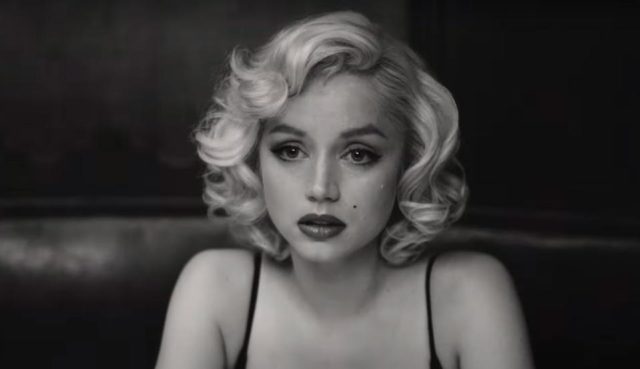
There are many movies to watch this fall, but “Blonde” should not be one of them.
The highly anticipated movie, starring Ana De Armas, premiered on Netflix on Sept. 28. The film’s director Andrew Dominik decided to follow Marilyn Monroe throughout a fictional version of her life.
This movie is filled with misconceptions and misinterpretations of Monroe’s life. It was originally based on the fiction book titled “Blonde” by Joyce Carol Oates; this novel is a fictionalized take on the actress’s life and should not be confused with her real biography. Many things in this film were taken too far and completely victimized Marilyn. Much of the movie creates a weak, starved for attention, depressed narrative of this woman.
Marilyn Monroe, originally born as Norma Jeane Mortenson, grew up in California with a mentally ill mother — in between her foster care stays. The film depicts their complicated relationship accurately. However, it created a premise of sadness and a “damaged goods” archetype in Monroe from the beginning.
Her real life was filled with hardships like times of poverty, degrading film roles, insults about her intelligence, struggles with mental illness, problems with substance abuse, domestic violence and multiple sexual assault incidents. But this film was not made with compassion or accuracy for any of these events. In fact, Monroe never only boiled down to that; she was resilient, driven and had a smart way of networking within the industry.
This film sexualizes her and her story without any sympathy for the person and soul behind the body. Towards the beginning of the film, there were a few scenes focusing on the “throuple” she was in, which also included Charlie “Cass’ ‘ Chaplin Jr. and Edward G. Robinson Jr. However, this “throuple” never happened in real life; it was only mentioned in the movie to introduce Monroe’s body into the story before her personality.
Not only was this film overzealous with its sex scenes, it was also slow, hard to follow and had terrible character development. In fact, it never introduced Monroe’s personality to the audience. Those who aren’t diehard Monroe fans will find it hard to depict what is happening throughout the film. “Blonde” was given the opportunity to showcase the true power of Marilyn, which was her resilience and power to command a room. However, it did not do that. Instead, it used her famous Hollywood bombshell reputation to tell the story that everyone thought was Marilyn. The hard to please, overemotional and male-obsessed woman that was shown in this film was a disrespectful depiction of her personality.
This film could have made way for the next generation to give some respect to her movies and career in the way that she deserved. Instead, it aimed to make money off of her iconic image, while showing everyone’s favorite part about famous women: their breaking point. Marilyn Monroe died by suicide after overdosing on sedative drugs that were meant to treat her depression.
“Blonde” is a one-dimensional, exploitative way to showcase Monroe’s traumas. She was disrespected and underestimated her entire life; because of this film, she is still being disrespected even after her death.














